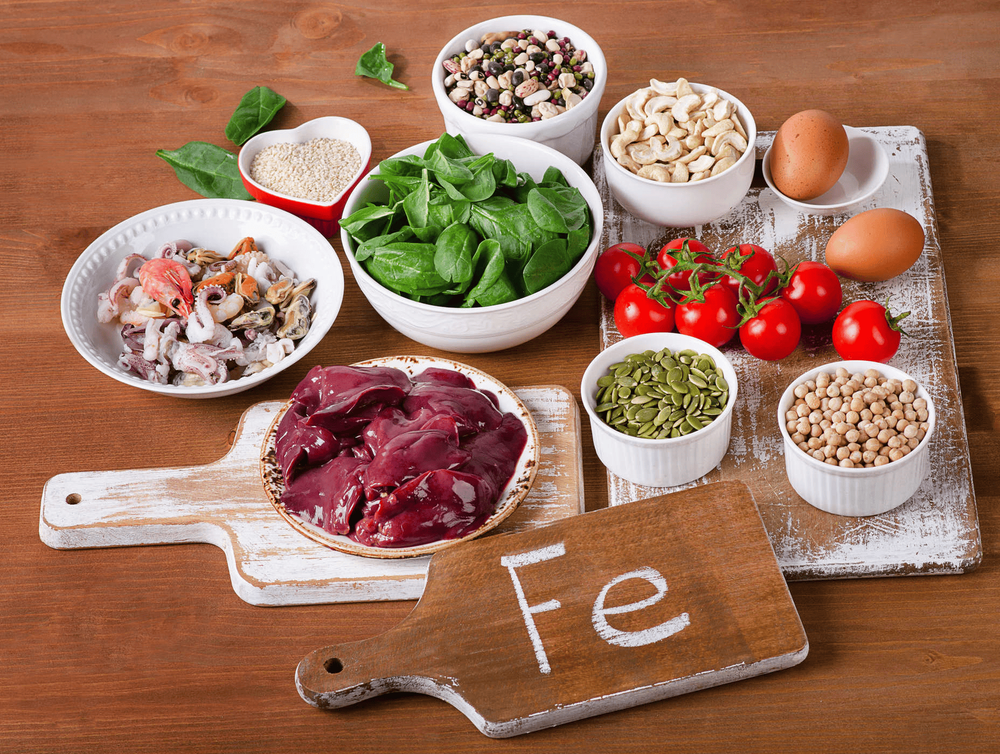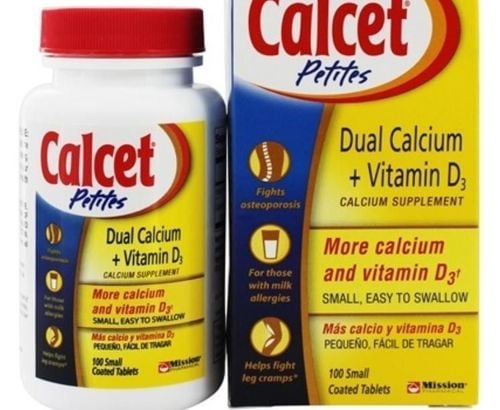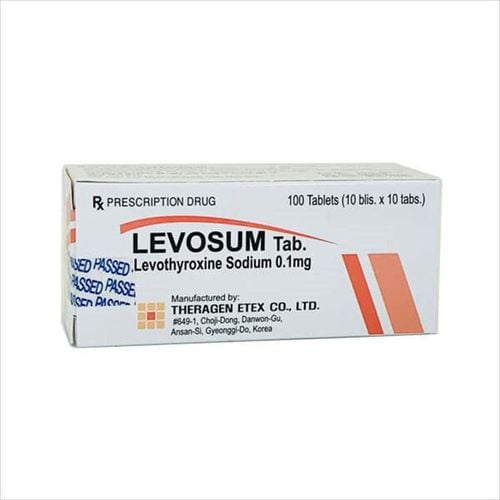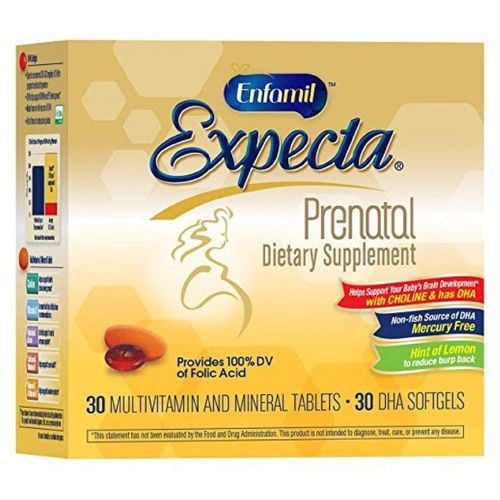This is an automatically translated article.
Micronutrients are known to be one of the main groups of substances that our body needs. These include vitamins and minerals. So what is the right need to recommend vitamins and minerals?
1. The role of micronutrients
Micronutrients play a central role in the metabolism and maintenance of tissue function, but the effect in the prevention or treatment of disease is not due to micronutrient deficiency. There is a highly integrated system to control the flow of pathogenic micronutrients and this demonstrates how important the body is aware of micronutrients. Therefore, adequate amounts are needed to maintain metabolism and tissue function but giving excess supplements to people who do not need them can be harmful.
Clinical benefit is most likely to occur in those who are severely depleted and at risk for complications. More studies are needed to better characterize micronutrient status markers both in terms of metabolic effects and antioxidant effects, so that at-risk patients can be identified and adjusted for supplementation. be suitable.
2. Manifestations of micronutrient deficiency
2.1. Iron-deficiency anemia You can usually correct iron-deficiency anemia by taking iron supplements. Sometimes, additional tests or treatments for iron deficiency anemia are needed, especially if your doctor suspects that you are experiencing internal bleeding.
Women of childbearing age are at increased risk for iron-deficiency anemia, due to blood loss from menstruation and eating a diet low in iron-rich foods. It is estimated that only one in four women of childbearing age eats the recommended amount of iron. Pregnancy is perhaps the most important time for women as the iron requirement triples to support additional blood volume, fetal development and blood loss during childbirth. Less than 30% of pregnant women get enough iron from their diet. Therefore, health organizations such as the CDC recommend that all pregnant women take iron supplements. However, poor adherence to this recommendation can lead to iron deficiency anemia.

Sắt có trong một số loại thực phẩm hàng ngày
2.2. Rickets due to calcium and vitamin D deficiency Rickets is a condition of soft and weak bones in children, usually due to prolonged and excessive vitamin D deficiency. Adding vitamin D or calcium to the diet often corrects the bone problems associated with rickets. When rickets is caused by another underlying medical problem, your child may need more medication or other treatment.
2.3. Iodine deficiency goiter Iodine deficiency disorder is one of the biggest public health problems worldwide today. Their effects are potential and profoundly affect people's quality of life. Iodine deficiency occurs when the soil is iodine-poor, resulting in low content of food products and insufficient iodine levels in the population. When iodine requirements are not met, the thyroid gland may no longer be able to synthesize adequate amounts of thyroid hormone. The resulting low levels of thyroid hormones in the blood are a major factor in a range of functional and developmental abnormalities, collectively known as IDD.
Iodine deficiency is an important cause of mental development problems in children, including effects on reproductive function and lower IQ levels in school-age children. The consequence of iodine deficiency during pregnancy is that the mother and fetus have impaired synthesis of thyroid hormone. Insufficient supply of thyroid hormone to the developing brain can lead to mental retardation. Brain damage and irreversible mental retardation are the most important disorders caused by iodine deficiency. Daily intake of iodized salt is a proven effective strategy for the prevention of IDD.
2.4. Malnutrition, stunting due to zinc deficiency Zinc is an essential trace element in human nutrition and it is important for various basic molecular functions. Thus, organismal zinc depletion affects virtually any organ system in the human body, it involves a number of diverse biochemical changes leading to general metabolic dysfunction. .
Marginal zinc deficiency mainly occurs when the amount of zinc absorbed from the diet is not sufficient to supply the increased need, increased loss, decreased absorption or decreased utilization. This form of zinc deficiency carries most of the public health implications of zinc deficiency. Marginal zinc deficiency adversely affects physiological, biochemical and immune functions.
Typical signs are growth retardation, hypogonadism in adolescent males, rough skin, poor appetite, mental lethargy, abnormal dark adaptation, abnormal neurological changes, and slow wound healing heal. A more severe form of zinc deficiency can be hereditary or acquired as a result of a zinc-free diet causing iron or severely impaired intestinal absorption.

Thiếu kẽm có thể gây tình trạng chán ăn ở người bệnh
2.5. Vitamin A deficiency and dry eye Disease Food deficiency is a major cause of vitamin A deficiency, mainly occurring in poor communities. In some areas of the world, up to 50% of preschool children are not getting enough vitamin A.
People can become vitamin A deficient if an underlying condition prevents the intestines from absorbing nutrients, such as such as diseases of the digestive system, including Crohn's disease and chronic pancreatitis.
A 2009 study compared vitamin A eye drops with prescription eye drops for dry eye . The researchers found they provided similar levels of symptom relief.
However, vitamin A can sometimes have adverse health effects. Discuss the risks and benefits of any vitamin A supplement with your doctor.
3. Recommended need for vitamins and minerals in a 1-day diet
Originally, they were thought to belong to a class of compounds known as amines and the term 'important amine' - 'vitamine' for short - was coined to classify them. It quickly turned out that they weren't amines - the term was retained but the final 'e' was dropped.
Vitamins are classified based on their solubility, which is important for nutrition and health:
Fat-soluble vitamins (A, D, E and K) can be stored in the body be available when needed. This means they don't need to be taken on a daily basis, and if taken in excess, they can rise to toxic levels. For example, the recommended daily dose of vitamin D is 5μg, but at doses 5 times this dose it is very toxic and with prolonged exposure can cause heart and kidney damage. The water-soluble vitamins (groups B and C) are not normally stored and any excess is excreted in the urine. They must be consumed regularly and in small doses. Doses that are too high can cause toxic effects. Although required in small amounts, vitamins have a wide range of physiological functions. For example, vitamin A is involved in eye function, vitamin K is involved in the production of clotting factors, and vitamin B1 (thiamine) plays an important role in carbohydrate metabolism. Vitamin A is stored in fat cells so it is possible to take too much vitamin A in supplement form, although it is unusual to get excess vitamin A from dietary sources. Most experts recommend a maximum dose of 10,000 IU of vitamin A per day.
Excessive intake of vitamin A can cause stomach and nerve related side effects, such as stomach and head pain, nausea, and irritability. Taking a lot of vitamin A can make symptoms more intense and also lead to the development of blurred vision.
Vitamin C is a water-soluble vitamin that supports normal growth and development and helps your body absorb iron. Because your body doesn't produce or store vitamin C, it's important to get vitamin C in your diet. For most people, an orange or a cup of strawberries, chopped red peppers or broccoli will provide enough vitamin C for the day.
Table of recommended needs for vitamins and minerals in a 1-day diet
| Trẻ em | Vitamin A (mcg/ngày) | Canxi (mg/ngày) | I ốt (mcg) | sắt (mg/ngày) | Kẽm (mg/ngày) | Magiê (mg/ngày) | Phospho (mg/ngày) |
| < 6 tháng | 375 | 300 | 90 | 0,93 | 2,8 | 36 | 90 |
| 6-11 tháng | 400 | 400 | 90 | 12,4 | 4,1 | 54 | 275 |
| 1-3 tuổi | 400 | 500 | 90 | 7,7 | 4,1 | 65 | 460 |
| 4-6 tuổi | 450 | 600 | 90 | 8,4 | 5,1 | 76 | 500 |
| 7-9 tuổi | 500 | 700 | 90 | 11,9 | 5,6 | 100 | 500 |
| Nữ trưởng thành | 500 | 1000 | 150 | 39,2 | 4,9 | 205 | 700 |
Note: Iron requirement is calculated according to the biological value of iron absorption 10%. Zinc is moderately absorbed.
Satisfy the needs of vitamins and minerals to help the body develop in a balanced and healthy way as well as minimize the risk of related diseases. Therefore, establish yourself and your family a complete diet and healthy lifestyle.
Please follow the website: Vinmec.com regularly to update many other useful information.
Please dial HOTLINE for more information or register for an appointment HERE. Download MyVinmec app to make appointments faster and to manage your bookings easily.













